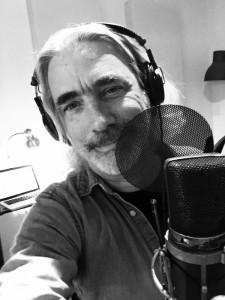Unveiling Audio Best Practices: The Room Tone Radio Podcast
What adventures can your audio passion lead you to?
In a perfect world, our obsessions are satisfied simultaneously with building up our communities. By that measure, the podcast known as Room Tone is produced in absolutely optimal conditions. Created by William Garrett, a longtime audio professional and owner of the NYC/LA studios Electracraft Music Works, this is a program made specifically for those who care deeply about recording and mixing better sound.
As the star interviews add up, Garrett’s audience is growing. Guests on his show have included Tony Maserati, Al Schmitt, Rob Fusari, Aimee Mann, Jesse Harris, and many more. A big part of the appeal is interviews that go beyond gear, that get into his subjects’ life path and unique sources of inspiration.
And of course, Room Tone sounds very, very good. While “adequate” is the audio quality objective for most podcast producers, Garrett can’t help but apply his sonic expertise to the recording and editing of his show.
What mic preamps, microphones, and Pro Tool techniques are applied when clarity really matters? How is producing a podcast just like concocting a hit song? And what’s the positive impact that giving back with this show has had on his own engineering career? Pick up on Garrett’s successful methods below.
The Inspiration: The inspiration for my Room Tone podcast came from a long time interest in NPR-style radio interviews by the likes of Terry Gross and also television interviews by Charlie Rose and others. I often found myself in very interesting conversations with people I met through my involvement in the music business as well as my involvement in visual arts, culinary arts and politics.
As a way to bring more attention to my studios, I came up with the idea of doing an interview series based at my studio locations in Los Angeles and New York City. A podcast seemed the perfect outlet for the interviews, since I was voracious podcast listener myself.
What at first was just a promotional idea for the studios has turned in to an incredible learning experience and a very exciting and satisfying creative outlet.
Being in the music business, my early interview subjects were music business folks (the first interview being singer/songwriter Sasha Dobson). As opposed to talking about recording gear and recording techniques, I wanted to know more about their choice of a creative life, their path into the business and their emotional and intellectual connection to making music.
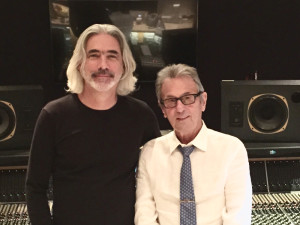
In the studio with Al Schmitt.
Stats: The Room Tone podcast launched in March 2015 and I have 23 interviews posted as well as 3 Room Tone “Extras,” which are shorter pieces that talk about specific subjects such as the Grammys, HBO’s “Vinyl” and David Bowie. I have 16 interviews yet to be edited, so lots of work to do!
Subjectivity: The folks that I choose to interview are generally friends or associates that have a compelling origins story and career path. I am also seeking guests from beyond my own circle.
One thing that’s lucky about what I do is that I meet new and interesting people all the time! I met the producer/engineer Jim Scott (seven Grammys, Rick Rubin, Californacation, Dixe Chicks) for the first time at a party in LA on a Saturday night and was interviewing him at his studio the next day!!
Pre Pro: I do minimal historical research via the Internet before I do the interview. While I need to know a general timeline and highlights of the person’s career path, I also want to leave room to discover more in-depth information about their path and decision-making process. It keeps the conversation interesting for me and sends my curiosity down different paths depending on what the interviewee has to say.
Lots of interviewers seem to tell their guest’s story in the questions that they ask. I like to keep the questions a bit simple and curious and let the guests tell me their story. In my interviews you’ll hear me say “Wow!” and “Amazing!” a lot because I always learn things I didn’t know about my guests, even when I thought I knew them very well!
The Studio: The best place for me to record of the interviews are my studios, Electracraft EAST and WEST, in New York or Los Angeles respectively.
I place the interview subject in the vocal booth with a perfect sight line to me in the control room. I like to be alone with my subjects, so me being in the control room gives me access to monitor the Pro Tools and recording levels as we record. The separation between the two voices enhances the sound quality as well as gives me options for editing later on.
I use the same signal path and microphones I would as if I were recording vocals for a musical project. That gear includes vintage Neve mic preamp’s, API Mic Pre’s, Universal Audio 1176 compressor, Retro Tube Compressor, Neumann Tube M146, Neumann U87, AKG 414, Shure SM7.
Due to some subjects not being able to make it to the studio, I record on location using a Tascam DR–40 PCM recorder with two Audio-Technica AT803 clip on condenser mics or a Pro Tools rig at that location.
The Recording: I wasn’t previously trained or experienced as an interviewer before I started doing Room Tone but I find that, just like in a recording session, the vibe is very important in getting a comfortable, insightful and interesting conversation.
It seems the most important part of the recording set up is that the guest is comfortable, has good sight lines and a comfortable headphone mix. Guests that are not involved in the recording industry are new to the process of recording and are excited to hear their voices (and mine) so clear and precise.
Some of my guests come in twos (EDM Duo Peking Duk, chef and restaurateur partners Johanne Killeen and George Germon of Il Forno and Hugue Dufour and Sarah Obraitis of M Wells) so I’ve tried several techniques including a single mic in a figure 8 pattern with the guests facing one another, a single mic in a cardioid pattern with the guests facing me, and recently using two clip-on lavaliere type mics.
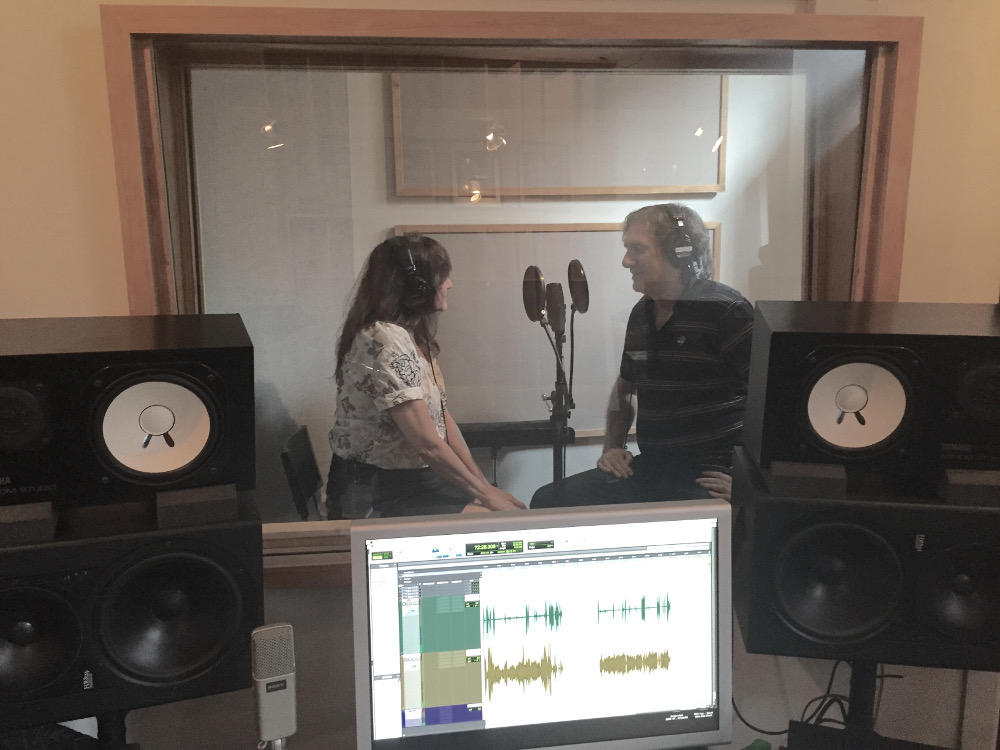
Dedicated facilities: Recording Lisa Burns & Sal Maida
Editorial: I record and edit the podcast interviews in Pro Tools. If I recorded interviews on location with the Tascam DR–40, I transfer those files into Pro Tools for editing. I add an intro and outro to each interview with voiceover and music and Pro Tools works well for that as well.
I’ve been using Pro Tools for music production since it first came out so am very comfortable working in that platform. I find shuffle mode very helpful (if not a bit dangerous!) when editing the interviews. Working with the two tracks of the conversation, shuffle mode helps me edit without throwing the tracks out of alignment.
Editing a conversation needs to be very precise as you don’t have thundering drums or loud guitars to cover your bad edits! Breaths, background noise and talking over one another makes things interesting.
I found to keep an interview interesting, I think of it just as if I was producing a great song. You create a comfortable flow, take out some boring bits and keep it interesting and exciting throughout, building to a satisfying end. A lot of those things happen during the interview itself and depend on the guest, but postproduction editing helps as well.
Posting and Feedback: I post the podcast on three platforms: iTunes, Soundcloud and YouTube. For the YouTube version, I create a video using still photos to create a montage that plays over the podcast intro. I use Facebook and Twitter to announce new podcast postings plus update fans on activities of past Room Tone guests, like Grammy wins.
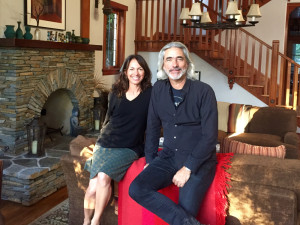
She shares: Susanna Hoffs spread the Room Tone love with her multitude of fans.
Feedback is judged by the amount of the listens/plays on each format, likes of FB etc… I also get written feedback via messages from listeners.
Some listeners wanted shorter episodes that talked about specific subjects so that led me to create my Room Tone Extras that are between four and ten minutes long and deal with timely subjects like the Grammys, HBO’s hit series “Vinyl” and David Bowie’s passing. The Room Tone Extras relate to subjects discussed in a guest’s full-length Room Tone interviews.
I’m still searching for more ways to get Room Tone to more potential listeners in a very crowded podcast market. Word-of-mouth and attention via Facebook and Twitter have been working so far, but it’s a slow build. When you interview a subject that has a large following, if they agree to promote it on their Facebook, Twitter and Instagram feeds, it leads to lots of listens.
I did a wonderful interview with Susanna Hoffs of the Bangles at her home in Los Angeles and once it was posted, she sent the link out to her huge fan base and it was amazing to watch the listens pile up. I was very grateful for her helping me promote the interview.
I have recently learned that reviews on iTunes are very important. They raise the podcast profile and can put it into the “New and Noteworthy” category where it will be much more visible. If folks out there listen and like Room Tone, PLEASE write a review on iTunes!
Blatant Shoutout: It has been very exciting for me to interview creative people from many disciplines. One thing I want to bring to the podcast is interviewing subjects that are well known and others that are not so well known but have a compelling story. Obviously it helps with listenership to interview famous people, but I have found that that is not always been a slam dunk.
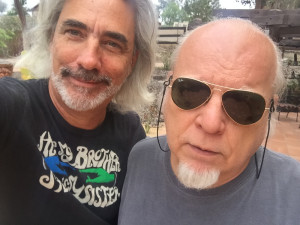
The Ramones, Talking Heads, The Smithereens, Living Colour, and Room Tone — together with Ed Stasium.
My wish list would of course feature music production heroes like Quincy Jones, Don Was and Al Schmitt (got that one…go to Room Tone to listen!) but also I just met a woman who started her own vodka company from her dorm room at Pratt, so that will make a great interview as well!
Wouldn’t it Be Nice…In interviewing lots of musicians/producers of a certain age, the Beatles were a huge influence. With the recent passing of George Martin, he is someone that comes to mind. I had the great pleasure in meeting him years ago and he was a true gentleman. I would like to talk to him about his early years and his personal take on his transition from the traditional music production of that era to working with the Beatles. Interesting I’m sure!
Personal Better/Best: Producing Room Tone has continued my dedication to detail and process. For me, personally, it has been a very interesting and educational experience. I feel very grateful and humbled to speak with my guests and hear their stories.
The idea grew out of my own personal interest, curiosity and a love for interesting conversation. I feel any project that pushes your boundaries and knocks you a bit out of your comfort zone is always positive. It’s amazing to learn something new every day.
— William Garrett, Room Tone Radio
Subscribe to Room Tone on iTunes, or visit RT on Facebook.
Please note: When you buy products through links on this page, we may earn an affiliate commission.







